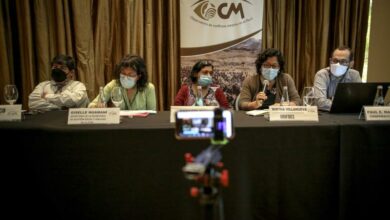Cuba banking on tourism recovery to rejuvenate economy in crisis

By Laura Becquer
Varadero, Cuba, May 3 (EFE).- The 40th edition of the International Tourism Fair, FitCuba 2022, kicked off on Tuesday after a two-year hiatus with Havana hoping to reactivate the country’s tourism sector, which plunged during the pandemic, amid an overall economy in crisis.
The Caribbean country, which depends greatly on foreign currency earnings from the tourism sector, reopened its borders in mid-November 2021 after closing down virtually all incoming travel due to the pandemic.
Despite the severe impact of the health crisis, “we’re optimistic and we are completely certain about the reactivation of Cuban tourism,” said Tourism Minister Juan Carlos Garcia, upon inaugurating FitCuba at the Plaza America convention center in the coastal resort community of Varadero, some 150 kilometers (93 miles) from Havana.
FitCuba will be a “showcase for the potential of Cuban tourism,” the minister said, adding that currently there are 19,709 hotel rooms currently available throughout the country.
Participating in the fair are 5,260 exhibitors from 53 countries who will seek business opportunities and display their products and services through May 7.
The current edition of the fair has Russia as an invited guest and is mainly promoting Cuba’s offerings of plenty of sun and the island’s beautiful beaches.
The program at this year gathering includes the presentation of business opportunities for foreign investors, a World Cocktail Championship and the promotion of cultural, sustainable and nature tourism.
The Tourism Ministry (Mintur) in 2021 announced the suspension of FitCuba for the second consecutive year due to the Covid-19 pandemic.
The restrictions implemented to try and limit the spread of the virus resulted in a huge drop in international tourist arrivals, in local tourism and the obligatory shutdown of a number of hotel facilities.
Before the pandemic hit in early 2020, the tourism sector was the second-biggest area of the Cuban economy, following foreign sales of professional services and contributing about 10 percent of the country’s GDP.
Approximately half a million people were employed in the state-run portion of the sector, along with a high percentage of private sector workers.
Two years ago, Cuba was aspiring to welcome 4.5 million international visitors in 2020, reversing the 9.3 percent drop in tourist arrivals the year before, when 4.2 million tourists visited the island, 436,352 fewer than in 2018, according to government figures.
But then, tourism plunged during the pandemic and only now is the sector beginning to recover.
During the first four months of this year, Cuba welcomed more than 450,000 international tourists, a figure almost seven times greater than during the same period the year before, when the country had restricted the entry of foreigners due to the pandemic.
According to the National Statistics and International Office (Onei), just 64,712 tourists arrived between January and April 2021, compared with 983,099 during the same period the year before.
The upsurge in tourist arrivals so far this year has led the authorities to speak about a “trend toward the gradual recovery of the sector.”
The Cuban economy would take in about $1.159 billion if it hits the target set by the government of 2.5 million visitors in 2022.
Cuban authorities have not modified those tourism or income forecasts despite the appearance of the Omicron variant of the coronavirus and the consequences of the war in Ukraine, which – above all – has affected Russian tourism to the island.
The state-run tourism sector is scheduled to finish out this year with a total of 84,906 hotel rooms on the island, 5.7 percent more than during the previous year, despite the pandemic.





